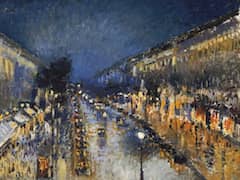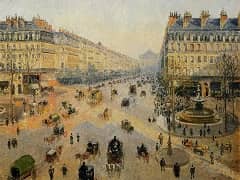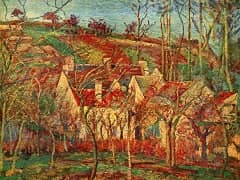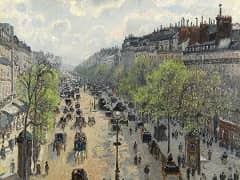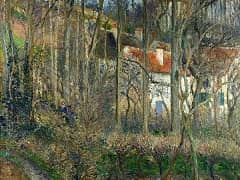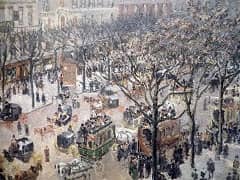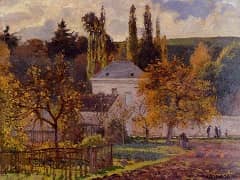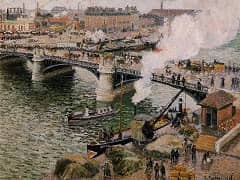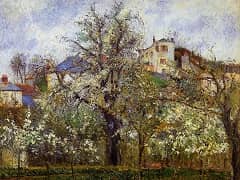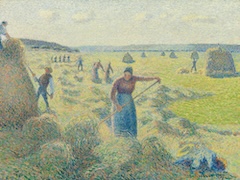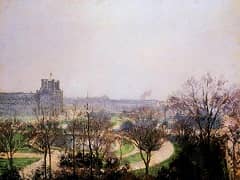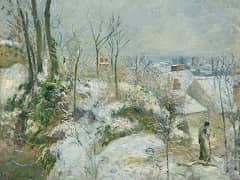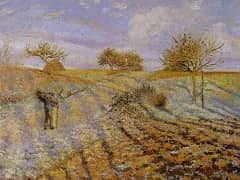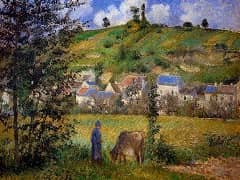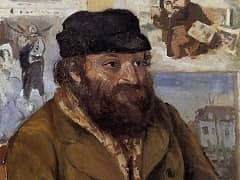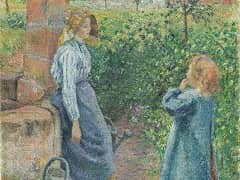Apple Picking at Eragny-Sur-Epte, 1888 by Camille Pissarro
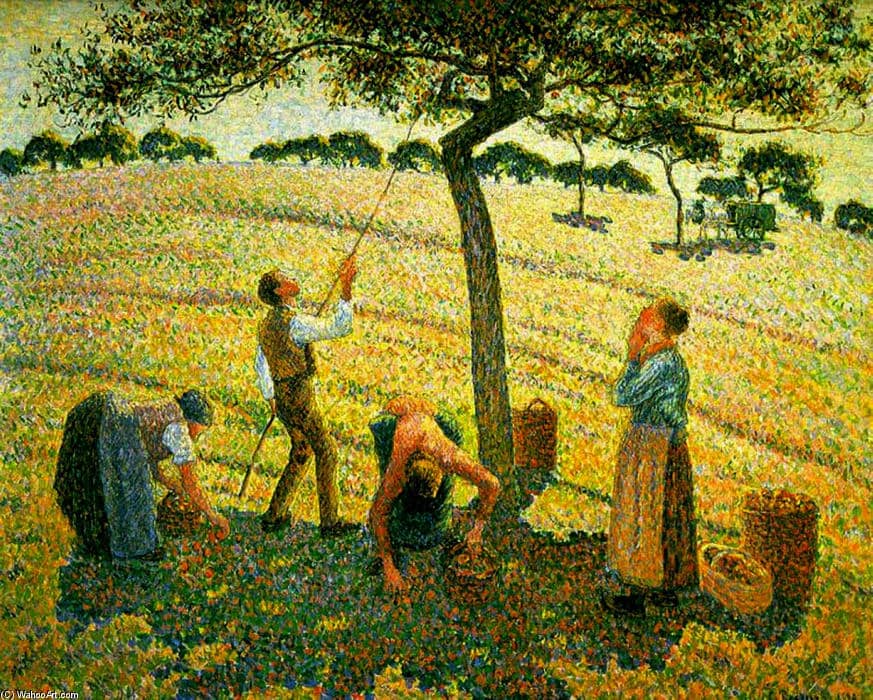
Apple Picking at Erugny-sur-Epte is one of Pissarro's most successful NeoImpressionist paintings. In it, he has succeeded in capturing with a luminosity of colour the diffused, hazy light of high summer. It is no wonder that in 1885 he said of his earlier work: "I find them poor, tame, grey,monotonous." By 1888, Pissarro and his family were established at Eragny-sur-Epte, not far from Monet at Giverny. He was to live in this farmhouse for the rest of his life, buying it in 1892 with a loan of 15,000 francs (soon repaid) from Monet. In his letters to Lucien, Pissarro jests about "Eragny Castle," and talks of Julie's pride in her flower garden, but to Pissarro it was a never-ceasing source of inspiration for his work.
Pissarro's meeting in 1895 with Seurat and Signac was to have a radical effect on his art. Like many of the Impressionists, he had been searching for new inspiration which would take his work beyond their early theories. A feeling of stagnancy after the heady years of innovation had turned Pierre-Auguste Renoir to the rediscovery of classical roots and Edgar Degas to experiments with different media. Pissarro too had been making progress towards a formulation of his style, and Seurat's theories based on the scientific integration of tone, colour and line seemed like a natural progression from his own work. The application of the paint in small dots of pure colour, known as Pointillism, was a refinement of his painting style of the early 1880s, and the theories on "mixing" the colours optically on the canvas developed and formalized his own exploration. Even the Neo-Impressionist formula for landscape, with the curved horizon, uplilted ground and generalized, atmospheric indication of recession, led on from Pissarro's "peasant girl" backdrops.

